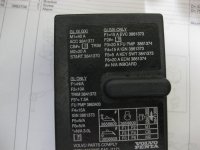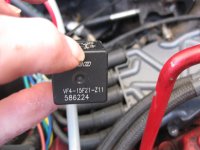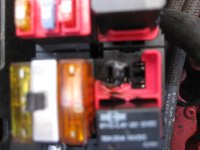kevinmongar
Cadet
- Joined
- May 1, 2023
- Messages
- 15
Yes the fuel pump fuse is a 20A.
I was just pointing out that the empty relay connector area (where the old relay was removed), with wires cut from the bottom of the box, still got to about 120 degrees...and that this now empty/unwired area happens to be next to the 40 A fuse (instrument panel, M1 in pic) in the box. It just seems weird that this now open spot would get hot.
I was just pointing out that the empty relay connector area (where the old relay was removed), with wires cut from the bottom of the box, still got to about 120 degrees...and that this now empty/unwired area happens to be next to the 40 A fuse (instrument panel, M1 in pic) in the box. It just seems weird that this now open spot would get hot.






















